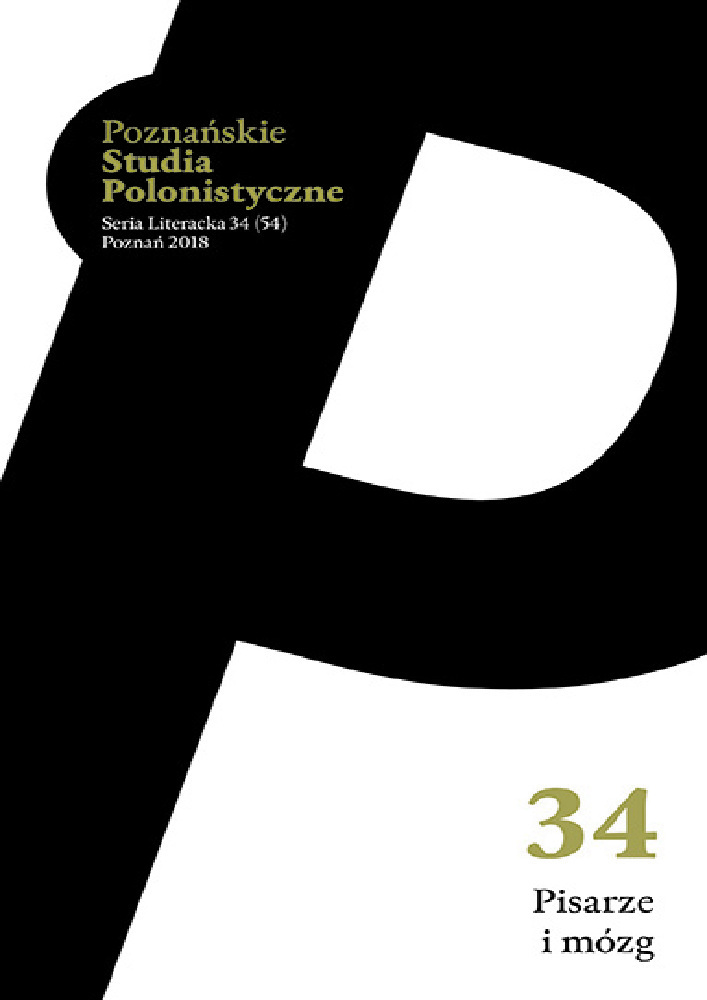Abstract
The article Art history and medicine concerns selected aspects of the Medcine in art exhibition, taking place at the Museum of Contemporary Art in Kraków (MOCAK) between 22nd April and 22nd October 2016. The author discusses the issue of medicine with regard to its mechanisms that let us create and perceive art. This reflection includes a historical overview of the “medically-oriented” art research. Another significant aspect constitutes the attempt to explain by the tools associated with neuroaesthetics, why the viewers are likely to look at some drastic images created by artists with such willingness and involvement. The analysis refers to texts by D. Freedberg, V. Gallese, A. Damasio, P. Przybysz, and others. It also includes interpretations of the photohraph Seated anatomical model by Zoe Leonard, as wellas the Medical Kit installation by Wilhelm Sasnal.References
Arnheim Rudolf (2005), Sztuka i percepcja wzrokowa, przeł. Jolanta Mach, Wydawnictwo słowo/obraz terytoria, Gdańsk.
Boehm Gottfried (2006), Widzenie. Refleksje hermeneutyczne, przeł. Małgorzata Łukasiewicz, w: O obrazach i widzeniu. Antologia tekstów, red. Daria Kołacka, TAiWPN Universitas, Kraków, s.239-260.
Bogousslavsky Julien, Boller François, red. (2005), Neurological Disorders in Famous Artists, „Frontiers of Neurology and Neuroscience”, t. 17.
Bogousslavsky Julien, Hennerici Michael, Bäzner Hansjörg, Bassetti Claudio, red. (2010), Neurological Disorders in Famous Artists-Part 3, „Frontiers of Neurology and Neuroscience”, t.27.
Bogousslavsky Julien, Hennerici Michael, red. (2007),
Neurological Disorders in Famous Artists-Part 2, „Frontiers of Neurology and Neuroscience”, t.22.
Bouillet Alain (2011), Co to jest art brut?, „Konteksty – Polska Sztuka Ludowa”, nr 65, s.141-152.
Damásio António (1999), Błąd Kartezjusza. Emocje, rozum i ludzki mózg, przeł. Maciej Karpiński, Dom Wydawniczy Rebis, Poznań 1999.
Damásio António (2003), Looking for Spinoza: Joy, Sorrow and the Feeling Brain, William Heinemann, London [Wielka Brytania].
Freedberg David, Gallese Vittorio (2007), Motion, emotion and empathy in esthetic experience, „Trends in Cognitive Science”, t. 11, s. 197-202.
Gallese Vittorio (2010), Mirror Neurons and Art,w: Art and the Senses,red. Francesca Bacci, David Melcher, Oxford University Press, Oxford [Wielka Brytania], s. 441-449.
Gombrich Ernst Hans (1981), Sztuka i złudzenie. O psychologii przedstawienia obrazowego, przeł. Jan Zarański, PIW, Warszawa.
Habrat Bogusław (2016), Neuropsychiatryczne aspekty rzeczywistości, w: Medycyna i sztuka, red. Tomasz Macios, Mariusz Sobczyński, Muzeum Sztuki Nowoczesnej MOCAK, Kraków, s.22-37.
Kandel Eric (2016), Reductionism in Art and Brain Science: Bridging the Two Cultures, Columbia University Press, New York [USA].
Kaumkötter Jürgen (2016), Poharatani, z wątrobą w strzępach, w: Medycyna i sztuka, red. Tomasz Macios, Mariusz Sobczyński, Muzeum Sztuki Nowoczesnej MOCAK, Kraków, s. 38-63.
Livingstone Margaret (2002), Vision and the Brain. The Biology of Seeing, Abrams Books, New York [USA].
Macios Tomasz, Sobczyński Mariusz, red. (2016), Medycyna w sztuce, Muzeum Sztuki Współczesnej w Krakowie MOCAK, Kraków.
Marcus Shahar (2009), Frog test [online], [dostęp: 6 lutego 2018], https://vimeo.com/27582986.
Marmor Michael, Ravin James (2009), The Artist’s Eyes. Vision and the History of Art, Abrams Books, New York [USA].
Medycyna w sztuce (2016), [online], Kraków [dostęp: 6 lutego 2018],
https://mocak.pl/medycyna-w-sztuce.
Orlan (1993), Omnipresence [online], [dostęp: 6 lutego 2018], https://vimeo.com/66967753.
Prinzhorn Hans (1922), Bildnerei der Geisteskranken Ein Beitrag zur Psychologie und Psychopathologie der Gestaltung, Verlag von Julius Springer, Berlin [Niemcy].
Prinzhorn Hans (1930), Genius and Madness, „Parnassus”, t. 2, nr 1, s. 19-20.
Przybysz Piotr, Markiewicz Piotr (2007a), Neuroestetyczne aspekty komunikacji wizualnej i wyobraźni, w: Obrazy w umyśle. Studia nad percepcją i wyobraźnią, red. Piotr Francuz, Wydawnictwo Naukowe Scholar, Warszawa, s. 111-148.
Przybysz Piotr, Markiewicz Piotr (2007b), Sztuka tworzenia, „Charaktery”, nr 10, s. 46-51.
Ramachandran Vilayanur S., Hirstein William (2006), Nauka wobec zagadnienia sztuki. Neurologiczna teoria doświadczenia estetycznego, przeł. Monika Blanka Florek, Piotr Przybysz, w:
Mózg i jego umysły, red. Wioletta Dziarnowska, Andrzej Klawiter, Wydawnictwo Zysk i S-ka, Poznań, s. 327-364.
Warburg Aby (2015), Atlas obrazów Mnemosyne, przeł. Paweł Brożyński, Małgorzata Jędrzejczyk, Narodowe Centrum Kultury, Warszawa.
Zeki Semir (1999), Inner Vision: An Exploration of Art and the Brain, Oxford University Press, New York [USA].
Zeki Semir (2001), Closet reductionists, „Trends in Cognitive Sciences”, t. 5, s. 45-46.
Zeki Semir (2012), Blaski i cienie pracy mózgu. O miłości, sztuce i pogoni za szczęściem, Wydawnictwa Uniwersytetu Warszawskiego, Warszawa.
Zeki Semir, Lamb Michael (1994), The neurology of kinetic art, „Brain”, t. 117, s. 607-636.
Zierkiewicz Edyta (2012), Patografia jako zjawisko kulturowe i jako narzędzie nadawania znaczeń chorobie przez współczesnych pacjentów, „Teraźniejszość – Człowiek – Edukacja”, nr 1 (57), s.49-61.
License
Authors
Authors of texts accepted for publication in „Poznańskie Studia Polonistyczne. Seria Literacka” are required to complete, sign and return to the editor's office the Agreement for granting a royalty-free license to works with a commitment to grant a CC sub-license.
Under the agreement, the authors of texts published in „Poznańskie Studia Polonistyczne. Seria Literacka” grant the Adam Mickiewicz University in Poznań a non-exclusive, royalty-free license and authorize the use of Attribution-NoDerivatives 4.0 International (CC BY-ND 4.0)Creative Commons sub-license.
The authors retain the right to continue the free disposal of the work.
Users
Interested Internet users are entitled to use works published in „Poznańskie Studia Polonistyczne. Seria Literacka” since 2016, for non-commercial purposes only, under the following conditions:
- attribution - obligation to provide, together with the distributed work, information about the authorship, title, source (link to the original work, DOI) and the license itself.
- no derivatives - the work must be preserved in its original form, without the author's consent it is not possible to distribute the modified work, such as translations, publications, etc.
Copyrights are reserved for all texts published before 2016.
Miscellaneous
Adam Mickiewicz University in Poznań retains the right to magazines as a whole (layout, graphic form, title, cover design, logo etc.).
